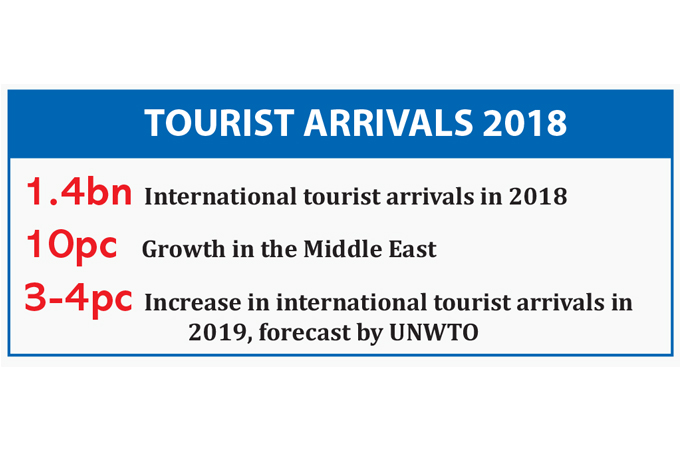
International tourist arrivals grew 6 per cent in 2018, totalling 1.4 billion according to the latest UNWTO World Tourism Barometer. UNWTO’s long term forecast issued in 2010 indicated the 1.4 billion mark would be reached in 2020, yet the remarkable growth of international arrivals in recent years has brought it two years ahead.
UNWTO estimates that worldwide international tourist arrivals (overnight visitors) increased 6 per cent to 1.4 billion in 2018, clearly above the 3.7 per cent growth registered in the global economy.
In relative terms, the Middle East (+10 per cent), Africa (+7 per cent), Asia and the Pacific and Europe (both at +6 per cent) led growth in 2018. Arrivals to the Americas were below the world average (+3 per cent).
“The growth of tourism in recent years confirms that the sector is today one of the most powerful drivers of economic growth and development. It is our responsibility to manage it in a sustainable manner and translate this expansion into real benefits for all countries, and particularly, to all local communities, creating opportunities for jobs and entrepreneurship and leaving no one behind” said UNWTO Secretary-General Zurab Pololikashvili. “This is why UNWTO is focussing 2019 on education, skills and job creation,” he added.
UNWTO’s long-term forecast published in 2010 predicted the 1.4 billion mark of international tourist arrivals for 2020. Yet stronger economic growth, more affordable air travel, technological changes, new businesses models and greater visa facilitation around the word have accelerated growth in recent years.
International tourist arrivals in Europe reached 713 million in 2018, a notable 6 per cent increase over an exceptionally strong 2017. Growth was driven by Southern and Mediterranean Europe (+7 per cent), Central and Eastern Europe (+6 per cent) and Western Europe (+6 per cent). Results in Northern Europe were flat due to the weakness of arrivals to the UK.
The Middle East (+10 per cent) showed solid results last year consolidating its 2017 recovery, with international tourist arrivals reaching 64 million.
Based on current trends, economic prospects and the UNWTO Confidence Index, UNWTO forecasts international arrivals to grow 3 per cent to 4 per cent next year, more in line with historic growth trends.
As a general backdrop, the stability of fuel prices tends to translate into affordable air travel while air connectivity continues to improve in many destinations, facilitating the diversification of source markets. Trends also show strong outbound travel from emerging markets, especially India and Russia but also from smaller Asian and Arab source markets.
At the same time, the global economic slowdown, the uncertainty related to the Brexit, as well as geopolitical and trade tensions may prompt a “wait and see” attitude among investors and travellers.
Overall, 2019 is expected to see the consolidation among consumers of emerging trends such as the quest for ‘travel to change and to show’, ‘the pursuit of healthy options’ such as walking, wellness and sports tourism, ‘multigenerational travel’ as a result of demographic changes and more responsible travel.
“Digitalisation, new business models, more affordable travel and societal changes are expected to continue shaping our sector, so both destination and companies need to adapt if they want to remain competitive,” added Pololikashvili.
